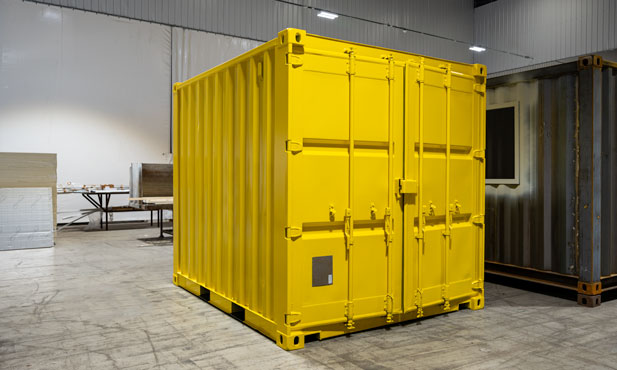Where Do Shipping Containers Come From?
Shipping containers are a familiar sight in the UK, if not loaded on ships, stacked up at ports, or being transported on the back of a lorry, they can often be seen converted into trendy shopping and food and drink hubs in city centres.
But when not being converted into housing schemes for the homeless, they are the means by which goods are transported all around the world. But how did they come to be, and where do they come from?
In the 1950s, American shipping magnate Malcom McLean was unhappy with how goods were moved, particularly the speed and reliability, so formed his own shipping company to move goods up and down the US eastern seaboard, and developed the modern intermodal shipping container.
It wasn’t long before the containers he developed became standardised, and the first international container ships set off across the Atlantic to Europe loaded with guns and returned to the US stocked up with whisky.
Previously, shipping was in bags, barrels, boxes, and crates, but McLean’s containers helped streamline shipping operations, and today millions of almost identical containers carry an unimaginably diverse catalogue of goods every day.
Where do they come from?
Approximately 97 per cent of shipping containers are manufactured in China, mainly as labour costs are low, and as China exports many of the world’s goods, it makes sense and is efficient to produce them there, instead of needing to transport empty containers to where the goods are made.
Standard ISO (International Organisation for Standardisation) shipping containers are 8ft (2.43m) wide, 8.5ft (2.59m) high and come in two lengths; 20ft (6.06m) and 40ft (12.2m). Extra tall shipping containers called high-cube containers are available at 9.5ft (2.89m) high.
There are also smaller 10ft (2.99m) and 8ft (2.43m) containers, but they cannot be shipped in the same way as 20ft and 40ft containers.
A standard 20ft shipping container has a capacity of 33.1 cubic meters, which is enough room to carry nearly 100 washing machines!
A large container ship can carry 15,000 shipping containers, and that number of containers can carry 745 million bananas. However, the number of spiders hiding in the bananas remains unknown!
How do they tell them apart?
Every commercial shipping container is assigned a unique unit number. This is made up of a 4-digit prefix, where the first three digits signify the owner, and the fourth denotes the category, usually a ‘U’ to signify ‘unit freight container’.
A 6-digit serial number and a check digit, which is calculated using a mathematical formula, follow this prefix. With this identification tag, you can track the container’s location as it travels across the world.
Containers can also be modified to suit a whole range of purposes, such as insulated or refrigerated containers for shipping food, containers with doors at either end or along the side, and even containers with removable roofs to allow easy transport of grains and other loose goods.
If you’re looking to buy second-hand shipping containers in the UK, talk to us today.

